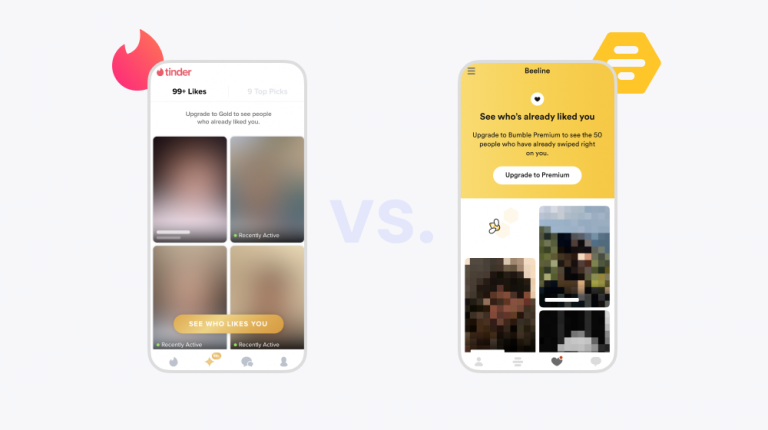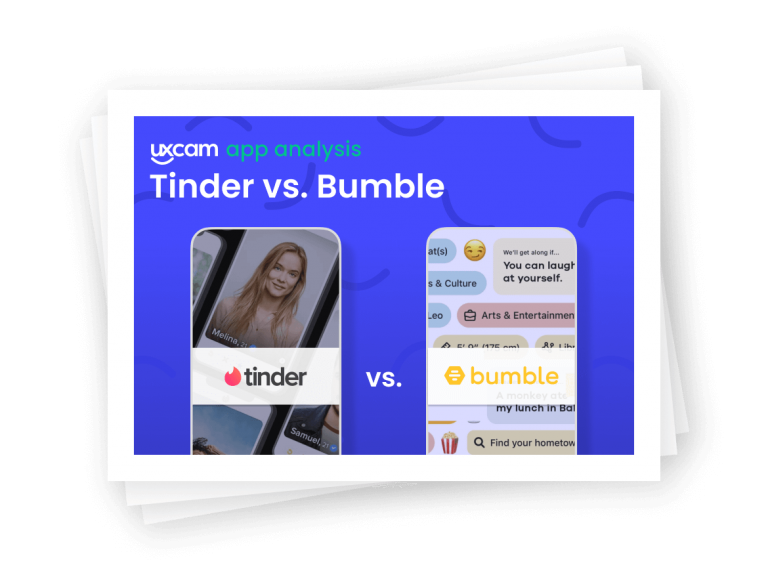Back to blog
1 MIN READ
Tinder is, unequivocally, the champion of dating apps. Many have tried imitating it — their swiping left and right has become a popular way of making decisions — because it revolutionized the dating market like online dating websites did in the 90s.
Bumble showed up out of nowhere and achieved what others couldn’t: focusing on connections — romantic or otherwise — and founded by Tinder’s former co-founder, Whitney Wolfe. It quickly became a fierce competitor that goes beyond dating.
Both apps seek to serve as a bridge to connect users. UX plays a huge role in how effectively they fulfill their purpose.


The “Likes” section on the Tinder app versus the “Beeline” on the Bumble app


Video chat on the Tinder and the Bumble apps
How did these two apps change the world of online dating forever? What features and design choices facilitate the ability to make a connection? And, of course, how do the UI and the UX of these lifestyle apps compare? Let’s find out.
We’ll cover areas like onboarding, setting up your profile, usability, liking, and engagement. Whether you work on a lifestyle app or not, you’ll be able to get UX takeaways applicable to your product.
To access the full UX app analysis, download your copy by clicking on the following button or image.
More app analyses:
AUTHOR

Ángela Gómez Sánchez
Passionate about linguistics and helping you deliver the perfect app experience.
What’s UXCam?
Related articles
UX design
Auditoria de UX – Como Realizar uma (Etapas, Modelos e Checklist)
Navegue por auditorias de UX com facilidade usando nosso guia para iniciantes, com instruções passo a passo, modelos personalizáveis e um checklist...

Tope Longe
Product Analytics Expert
UX design
UX Audit - How to Conduct One (Steps, Templates & Checklist)
Navigate UX audits effortlessly with our beginner's guide, offering step-by-step instructions, customizable templates, and a detailed...

Tope Longe
Product Analytics Expert
UX design
12 UX Metrics to Measure and Enhance User Experience
Unlock product success by tracking the right UX metrics. Learn 12 essential metrics, how to measure them, avoid common pitfalls, and take action with tools like...

